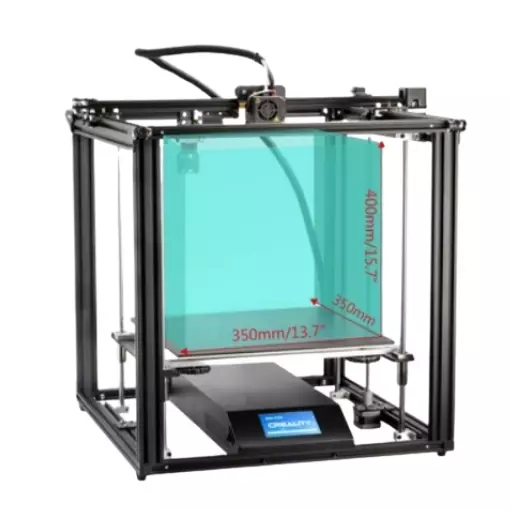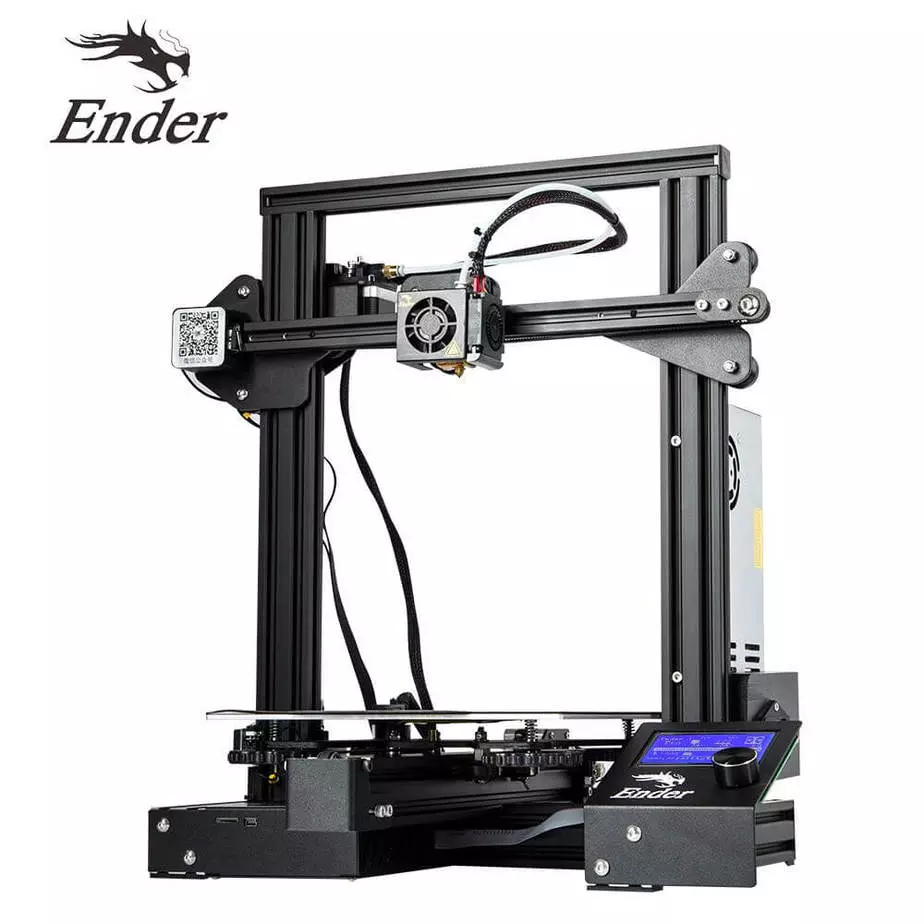Compare Ender 5 Plus vs Ender 3 PRO
Comparison between the best 3D printers
Choose the best 3D printer at the best price. The cheapest 3D printers are here.
Buy a 3D printer here with 3D Fila.
 |
 |
|
| Model | Ender 5 Plus[BUY Ender 5 Plus] |
Ender 3 PRO[BUY Ender 3 PRO] |
| Printing Material | Filament | Filament |
| Buy Filament for Creality 3D Ender 5 Plus | Buy Filament forCreality 3D Ender 3 PRO | |
| Estimated price | $599,00 | $258,00 |
| Manufacturer | Creality 3D | Creality 3D |
| Release Year | 2019 | 2019 |
| Print Volume [mm] | 350x350x400 | 220x220x250 |
| Printer Size [mm] | 632x619x666 | 440x440x465 |
| Weight [kg] | 18,2 | 6,62 |
| Power Loss Recovery | YES | NO |
| Enclosed printer | NO | NO |
| Bed Leveling | Automatic | Manual |
| Filament End Sensor | YES | NO |
| Bed type | Heated | Heated |
| Power supply system | Bowden | Bowden |
| Standard nozzle | 0,4 | 0,4 |
| Maximum Nozzle Temperature [°C] | 260 | 255 |
| Maximum Bed Temperature [°C] | 100 | 110 |
| Maximum printing speed [mm/s] | 180 | 180 |
| Filament holder | YES | YES |
| Camera for supervision | NO | NO |
| Recommended filaments | PLA, TPU, ABS, PETG | PLA, TPU, ABS, PETG |
| Recommended slicers | Cura, Simplify, Slic3r | Cura, Simplify, Slic3r |
| Maximum Resolution [mm] | 0,1 | 0,1 |
| Processor | 32 bits | 32 bits |
| Display | Touchscreen TFT 4,3'' | Mono |
| Power Supply | 24V / 504W | 24V / 360W Meanwell |
| Connectivity | SD / USB | SD / USB |
| Operating systems | Windows, Mac, Linux | Windows, Mac, Linux |
| Date of registration in the system | 2021-04-14 | 2021-04-14 |
| Release date | 2019 | 2019 |
| Extra features | The Ender 5 Plus offers a large print volume (350x350x400 mm) and fast assembly. It includes a BLTouch sensor, but with range limitations. It stands out for its dimensional accuracy, although it requires adjustments to the slicer settings. Despite the noise, its integrated design saves space, and includes features such as a filament sensor and power resumption. Ideal for large projects, it requires refinement in the settings for high-quality prints. | The Ender 3 Pro stands out for its beginner-friendly assembly and easily modifiable structure. With a 350W power supply, it heats up quickly and has a simple application that offers good print quality. However, its motors and fans are noisy, and the interface seems outdated. Assembly is accessible, without the need for advanced techniques, and it has integrated belt tensioners. It includes a detailed guide and supports microSD card and USB. |
| Support for multiple colors and materials (AMS and CFS) | NO | NO |
Notes * |
||
| Cost-benefit | 6 / 10 | 6 / 10 |
| Hardware | 2 / 10 | 0.5 / 10 |
| Tela | . | . |
| Print volume | 4 / 10 | 3 / 10 |
| Performance | 1 / 10 | 1 / 10 |
| [BUY Ender 5 Plus] | [BUY Ender 3 PRO] |
Conclusion |
| In comparing the Ender 5 Plus and the Ender 3 Pro, both 3D printers offer distinct advantages catering to different user needs and levels of expertise. The Ender 5 Plus is ideal for those who require a larger print volume and advanced features such as automatic bed leveling and a filament end sensor, making it suitable for more complex projects. Its enhanced specifications, including a robust build size and power loss recovery, contribute to its ability to handle larger and more demanding print jobs, albeit at a higher price point. Conversely, the Ender 3 Pro provides an excellent entry point for beginners. Its simpler assembly process, lower cost, and easily modifiable structure make it an attractive option for users new to 3D printing. Although it lacks some advanced features found in the Ender 5 Plus, it still delivers commendable print quality and is compatible with a wide range of materials. Ultimately, the choice between these two models depends on the user’s budget, printing needs, and level of experience. For those prioritizing print size and advanced capabilities, the Ender 5 Plus justifies its higher price with additional functionality. In contrast, the Ender 3 Pro stands out as a solid choice for beginners or those with lighter printing demands, providing good value without a significant financial commitment. |

